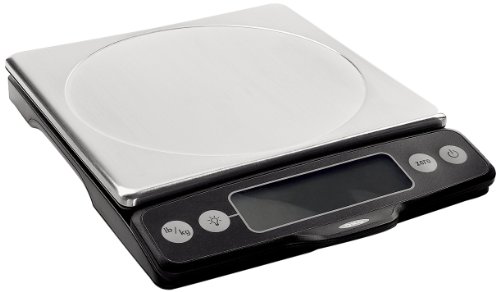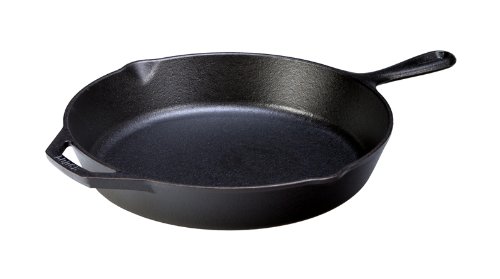
It’s difficult to make good bread today, but it’s darned easy to make hot, fresh, world-class bread tomorrow. You see that slab of focaccia above? The one covered with olives, rosemary, and pistachio? The one with the crisp, olive oil-scented crust and the puffy, moist, well-risen internal crumb with just the right amount of tender chew? All of that can be coming directly out of your own home oven. But tomorrow, not today.
The method for this focaccia is largely based on my foolproof pan pizza. The crux of it is a highly hydrated, no-knead, no-stretch dough. That’s right. Zero kneading, zero stretching. It’s just about the easiest bread you can imagine making. All it takes is a bit of time.
There’s nothing new about no-knead dough. It’s a technique that was developed by Jim Lahey of Sullivan Street Bakery and popularized by Mark Bittman of the New York Times way back in 2007. The basic premise is simple: mix together your dough ingredients in a bowl just until they’re combined, cover it, and let time take care of the rest. For this focaccia, we’re talking flour, salt, yeast, and water. That’s it.

(P.S. to make this recipe even faster and more accurate, make sure you use an accurate digital scale like this one from OXO to measure your ingredients into a bowl instead of relying on fiddly cup measures.)

So how does it all work? Flour naturally contains enzymes that will break down large proteins into smaller ones. Imagine those enzymes as teeny-tiny wire cutters that cut those jumbled balls of protein wire into shorter pieces. The shorter the pieces are, they easier it is to untangle them, and the easier it is to then align them and link them up into a good, strong network of gluten. No-knead dough recipes take advantage of this fact.
Typically, gluten networks are formed through kneading. Mechanical action causes those proteins to link up. With a no-knead dough, over the course of an overnight sit at room temperature, those enzymes get to work breaking down proteins. Meanwhile, yeast starts to consume sugars in the flour, releasing carbon dioxide gas in the process. These bubbles of gas will cause the dough to start stretching and, in the process, will jostle and align the enzyme-primed proteins, thereby creating gluten.

Simply allowing the dough to sit overnight will create a gluten network at least as strong (if not stronger!) than a dough that has been kneaded in a mixer or by hand, all with pretty much zero effort. Indeed, the flavor produced by letting yeast do its own thing over the course of that night will also be superior to that of any same-day dough. Win-win!
Other than time, the only real key to a successful no-knead dough is high hydration. Specifically, the water content should be at least 60% of the weight of the flour you use. Luckily, high hydration also leads to superior hole structure upon baking. I go for about 65%.
Once the dough is done with its overnight rest, I turn it out of the bowl onto a lightly floured surface, form it into a ball, then plop it right into a 12-inch cast iron skillet that’s been well-greased with plenty of extra-virgin olive oil, and turn the ball until it’s coated in oil. Then I cover the pan with plastic wrap and set it aside. Cast iron works best here since it’s oven safe and will transmit heat to the bottom of the bread at a moderate pace, ensuring that the bottom doesn’t burn before the rest is cooked through (you can also place the skillet directly on a burner after it comes out of the oven if you want the bottom to be crisper).

Meanwhile, the olive oil actually performs two functions. First, it allows the dough to relax and expand freely without sticking to the bottom of the pan. This is where the no-stretch element comes in. As the yeast gets to work for a second time, the dough slowly expands. Because it’s so well-hydrated and rested, it’s quite slack. Instead of growing upwards, it grows sideways, filling out the pan to the edges over the course of about two hours.
Second, the olive oil is what will give your focaccia its signature crisp, nearly fried bottom crust, all while packing it with flavor.

After the dough has stretched, the rest is easy. I place sliced pitted olives and whole fresh rosemary leaves on top of it along with a handful of lightly crushed pistachios, then drizzle it all with some more olive oil and sprinkle it with coarse sea salt.

To get the olives and pistachios to stick, I press them down into the dough, dimpling the surface of the dough in the process. This dimpling is a traditional feature of focaccia as well. At this stage, you’ll probably see a few thin-walled bubbles poking up through the dough. It’s a good idea to pop these—otherwise they’ll expand like balloons in the oven, disturbing the toppings and eventually charring and burning.

For the best texture, you want that oven hot. I’m talking 550°F. The idea is to maximize oven spring—the initial bout of rapid rising that the bread goes through when you pop it in the oven. Oven spring occurs because gases trapped inside the dough expand upon being heated before the protein structure has a chance to firm up. The hotter the oven, the better the spring.
A hot oven also gives you the chance to form these:

Micro-blisters, as I call them. The teeny tiny bubbles of expanded dough that dot the surface of good bread, giving it extra crunch and flavor.
In just about 20 minutes, you’ve got yourself hot, fresh, flavor-packed bread with a tender, stretchy crumb and a crazy-crisp crust.

I think I actually exaggerated about the amount of work this takes. Ten minutes, tops.
I predict many of you will be eating bread tomorrow and perhaps a sandwich on Wednesday.
GET RECIPE: Easy No-Knead Olive-Rosemary Focaccia With Pistachios